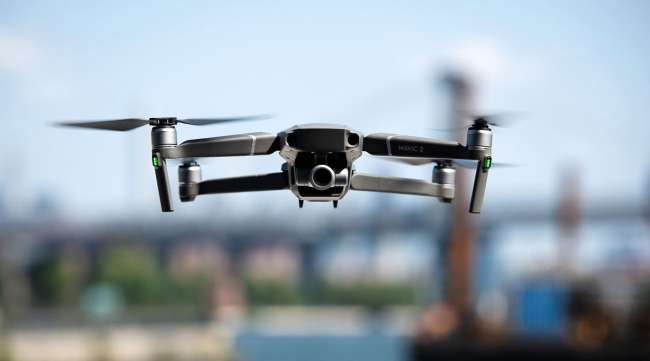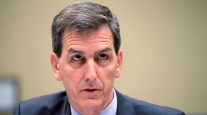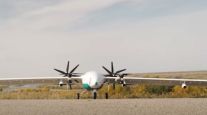Drone Use in US to Get Boost in New Security Rules

[Ensure you have all the info you need in these unprecedented times. Subscribe now.]
Commercial U.S. drone flights are set to receive a huge boost as soon as the week starting Dec. 28 with requirements that most of the devices must transmit a radio beacon with a digital license plate.
All but the smallest drones will have to broadcast a radio signal identifying them and their location under new Federal Aviation Administration regulations, according to a summary of the action reviewed by Bloomberg News.
The new regulations, portions of which will come into play after 30 months of them becoming effective, are an important foundation required before drone deliveries and other commerce can occur. They mark the most significant regulatory expansion in drone capabilities since the devices first trickled into civilian markets starting about a decade ago.
The actions break a regulatory roadblock that had held up growth in unmanned aircraft technology in the U.S. Requiring an ID broadcast addresses concerns from federal law enforcement and homeland security agencies that the increasingly capable flying machines would be used for crime and terrorism.

In this year in review episode, we discuss COVID and everything from gas tax to remote work. With the help of our special Transport Topics guests, Seth Clevenger and Eleanor Lamb, we’ll also begin to map a plan for 2021. Hear a snippet, above, and get the full program by going to RoadSigns.TTNews.com.
The new rules will be “an essential building block toward safely allowing more complex” drone operations, the agency said in the summary.
Several years ago the agency had been set to expand drone flights over crowds in some cases and to allow them routinely at night, but it wasn’t permitted to move ahead with those rules until it addressed security concerns. Those rules are expected to be finalized as soon as next month, according to the agency.
The FAA didn’t reply to messages seeking comment sent after business hours. The White House’s Office of Management and Budget concluded its review of the regulation Dec. 23, according to its website.
It will still be years before swarms of drones operated by companies such as Amazon.com Inc.’s Prime Air, Alphabet Inc. offshoot Wing and UPS Inc. buzz over neighborhoods dropping off packages. But the new rules provide an important platform for the industry to move toward those goals.
RELATED: Drones Could Help Bridge the Economic, Social Divides for Vaccine Distribution
A robust drone tracking system is needed to ensure the public accepts these new businesses, UPS Flight Forward said in comments on the proposal earlier this year. “If illegal and unsafe operators cannot be identified and stopped, confidence in the system will be eroded and voluntary compliance will be undermined,” the company wrote.
The new regulation will require drones weighing more than 0.55 pound to broadcast their identity on a low-power radio frequency such as Wi-Fi or Bluetooth. In that way, police or other authorities can monitor nearby drones.
The regulations also allow for existing drones to be retrofitted with such a system.
The rule doesn’t require that the devices broadcast on a signal that can be transmitted by mobile phone networks to a national tracking network, a measure that was originally included in a proposal unveiled last year.
RELATED: Amazon's Drone Delivery Fleet Hits Milestone With FAA Clearance
Hobbyists who fly the devices at government-approved sites can seek exemptions, so long as they’re flown in restricted areas identified to the FAA.
The new rules are an attempt to address the explosion of drone use. The FAA had registered almost 1 million recreational drone users and they owned 1.3 million of the devices as of last year. An additional 385,000 commercial drones had been registered with the agency, according to its data.
At the same time, there has been a surge of reports of the devices flying dangerously near traditional planes and helicopters — even Air Force One — and cases of them being used for drug smuggling or terrorist attacks in other nations. The National Transportation Safety Board has concluded drones were involved in several U.S. midair collisions.
Want more news? Listen to today's daily briefing:
Subscribe: Apple Podcasts | Spotify | Amazon Alexa | Google Assistant | More




